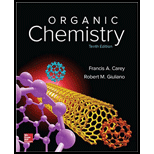
Interpretation:
The major products that are formed from the given organic reaction are to be determined. The stereochemistry that exhibits by the diastereomeric products, if they are formed by these reactions is to be explained.
Concept Introduction:
The catalytic hydrogenation reaction is an addition reaction of hydrogen gas in a molecule in the presence of a catalyst.
Answer to Problem 22P
Solution:
a) The principal organic product is.:

b) The principal organic product is:

c) The principal organic product is:

d) The principal organic product is:

e) The principal organic product is:

f) The principal organic product is:

g) The principal organic product is:

h) The principal organic product is:

i) The principal organic product is:
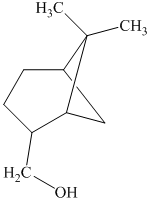
j) The principal organic product is:
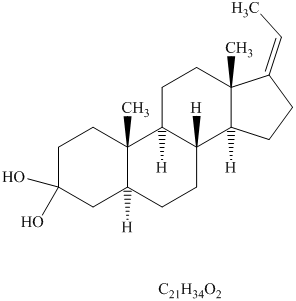
Explanation of Solution
a) The given organic reaction isshown below.
The given reaction is the hydrogenation of

b) The given organic reaction is shown below.
The given reaction is the hydrogenation of alkynes in the presence of

c) The given organic reaction is shown below.
The given reaction is the hydrogenation of alkenes in the presence of a platinum catalyst that reducesalkenes to
d) The given organic reaction is shown below.

The carboxylic acid and its derivatives are reduced to the primary alcohol with the help of strong reducing agents such as lithium aluminum hydride,
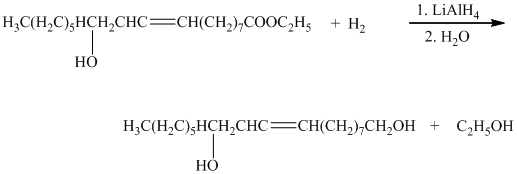
e) The given organic reaction is shown below.
In the given reaction, the epoxidation of alkene takes place. In such a reaction, the transfer of an oxygen atom from the peracid to
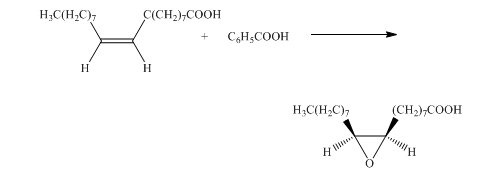
f) The given organic reaction is shown below.
In the given reaction, the hydrolysis of the product takes place that results in the breaking of the oxirane ring and forms a vicinal diol that is associated with two hydroxyl groups present on adjacent carbon atoms. The principal organic product of the given reaction is shown below.

g) The given organic reaction is shown below.
In the given reaction, osmium tetraoxide

h) The given organic reaction is shown below.
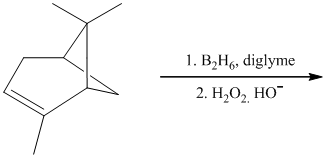
In the given reaction, hydroboration of alkenes takes place with the help of

i) The given organic reaction is shown below.
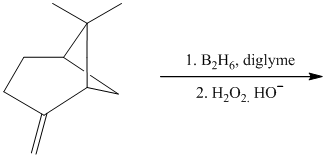
In the given reaction, hydroboration of alkenes taken place with the help of
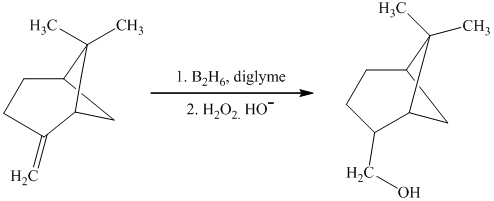
j) The given organic reaction is shown below.

In the given reaction, the dehydration of secondary alcohol is taken place in the presence of
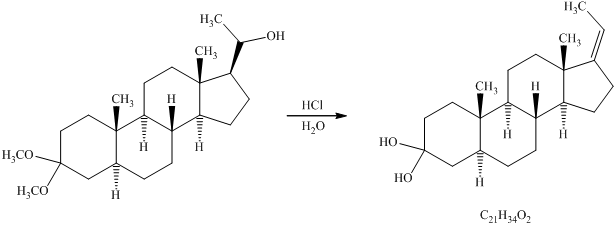
Want to see more full solutions like this?
Chapter 25 Solutions
ORGANIC CHEMISTRY (LL)-W/SOLN.>CUSTOM<
- DE d. Draw an arrow pushing mechanism for the following IN O CI N fo 人 P Polle DELL prt sc home end ins F5 F6 F7 F8 F9 F10 F11 F12arrow_forwardPredict the products of this organic reaction: + H₂O H* ? A Specifically, in the drawing area below draw the skeletal ("line") structure of the product, or products, of this reaction. (If there's more than one product, draw them in any arrangement you like, so long as they aren't touching.) If there aren't any products because this reaction won't happen, check the No reaction box under the drawing area. No Reaction Click and drag to start drawing a structure.arrow_forwardPredict the major organic products of the reaction below and draw them on right side of the arrow. If there will be no significant reaction, check the box below the drawing area instead. C Cl CH, OH There will be no significant reaction. + pyridine G Click and drag to start drawing a structure.arrow_forward
- What is the missing reactant in this organic reaction? H R+ H2O Δ OH 0= CH3-CH-O-CH3 + CH3-C-OH Specifically, in the drawing area below draw the condensed structure of R. If there is more than one reasonable answer, you can draw any one of them. If there is no reasonable answer, check the No answer box under the drawing area. No Answer Click anywhere to draw the first atom of your structure. dyarrow_forwardYou are trying to determine whether the following organic reaction can be done in a single synthesis step. If so, add any missing reagents or conditions in the drawing area below. If it isn't possible to do this reaction in a single synthesis step, check the box below the drawing area instead. Note for advanced students: if you have a choice of reagents to add, you should choose the least reactive and most economical reagents possible. Cl It isn't possible to do this reaction in a single synthesis step. + T OHarrow_forwardPredict the products of this organic reaction: CH3 O CH3-CH-C-O-CH2-CH2-CH3 + H₂OH+ Η ? A Specifically, in the drawing area below draw the condensed structure of the product, or products, of this reaction. (If there's more than one product, draw them in any arrangement you like, so long as they aren't touching.) If there aren't any products because this reaction won't happen, check the No reaction box under the drawing area. No Reaction Click anywhere to draw the first atom of your structure.arrow_forward
- € CH3-CH-C-O-CH2-CH2-CH3 + NaOH A? Specifically, in the drawing area below draw the condensed structure of the product, or products, of this reaction. (If there's more than one product, draw them in any arrangement you like, so long as they aren't touching.) If there aren't any products because this reaction won't happen, check the No reaction box under the drawing area. Predict the products of this organic reaction: CH3 O Click anywhere to draw the first atom of your structure. No reaction ✓ Garrow_forwardA molecule can have a temporary or permanent depending on the structure and the way the electrons can move. True Falsearrow_forwardedict the products of this organic reaction: CH3 O A CH3-CH-C-NH2 + H2O + HCI ? Specifically, in the drawing area below draw the condensed structure of the product, or products, of this reaction. If there's more than one product, draw them in any arrangement you like, so long as they aren't touching. If there aren't any products because this reaction won't happen, check the No reaction box under the drawing area. Click anywhere to draw the first atom of your structure. No Reaction planation Check 2025 McGraw Hill LLC. All Rights Reserved. Terms of Use | Privacy Center +arrow_forward
- Draw the mechanism for the following reaction: OH A few notes: CI O • You may assume that each reagent is present in whatever amount you need to draw your mechanism. • To save you some time, one of the starting materials has been copied into the first step of the drawing area. AP Add/Remove step Cl Click and drag to start drawing a structure.arrow_forwardWhat is the missing reactant in this organic reaction? CH3 O [0] R CH3-CH-C-OH Specifically, in the drawing area below draw the condensed structure of R. If there is more than one reasonable answer, you can draw any one of them. If there is no reasonable answer, check the No answer box under the drawing area. Note: the organic equation above only shows the important organic reactant and product. Minor small-molecule reactants or products (like H₂O) are not shown. No Answer Click anywhere to draw the first atom of your structure. ×arrow_forwardPredict the product of this organic reaction: O CH3 A NH3 + HO–C—CH—CH, P+H₂O Specifically, in the drawing area below draw the condensed structure of P. If there is no reasonable possibility for P, check the No answer box under the drawing area. No Answer Click anywhere to draw the first atom of your structure. A 5arrow_forward
